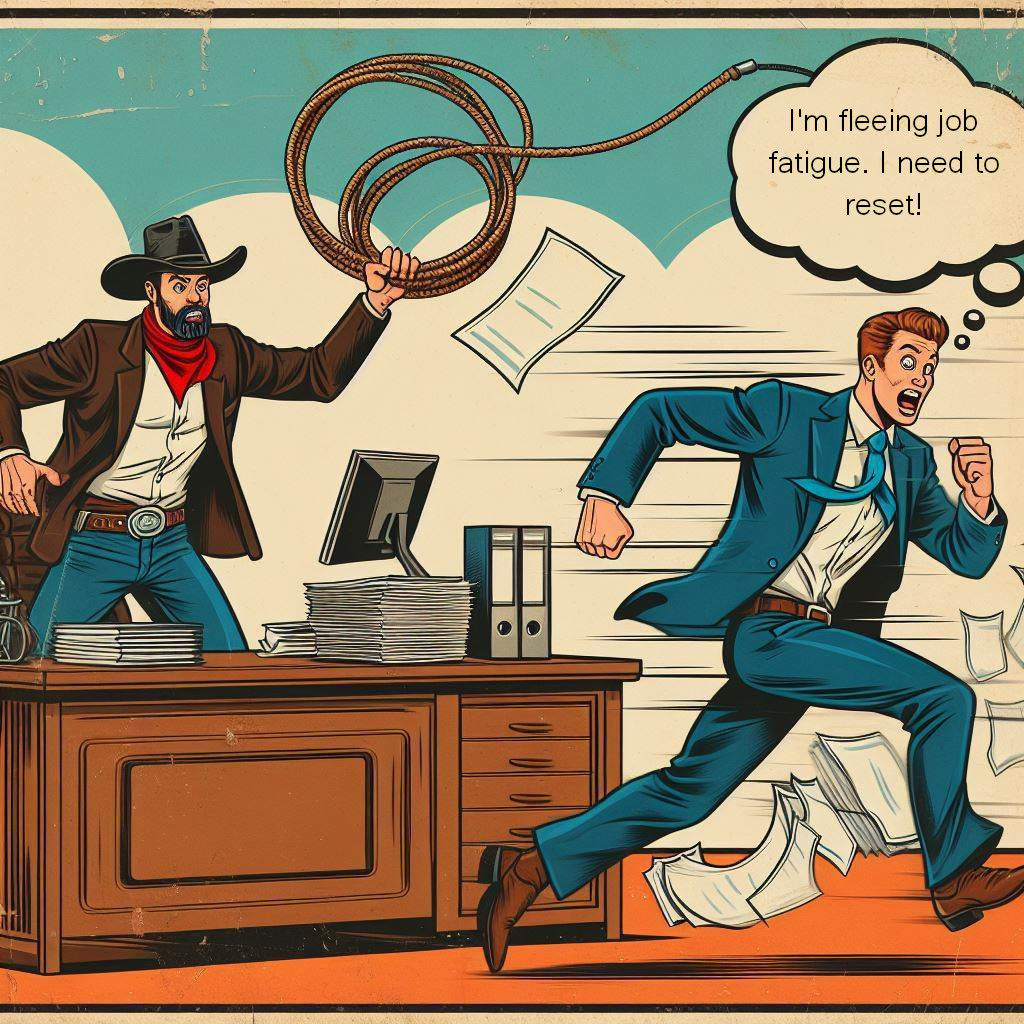Projects without vision or vision without projects are equally futile endeavours. Moreover, projects and vision are managed in very different ways. Projects are iterative, sequential, Agile, etc., which have rigorous methods. On the one hand, vision happens spontaneously and can occur after a period of unhindered reflection, whereas projects can only tolerate thresholds of time delays or will cost more and / or risk becoming redundant. However, vision can heuristically solve problems by approaching them from a new horizon with different rules. Projects can change people and systems to adapt and create new horizons in this way; and, therefore, project management methodology (PMM) should govern the control of any system change, albeit without vision, measuring change is a pseudo-science at best and an arbitrary corruption at worst. Although this is no better or worse than simply having an idea and not acting on it. In short vision, combined, and project management are powerful tools in strategic organisational change (Shenhar & Dvir, 2007; Yazici, 2020).
However, neither vision nor capabilities are absolutes; organisations will have these qualities to various degrees. Understanding the vision / capability matrix for your organisation can help determine strategies for enhancing these individual qualities, and creating more synergy between the two. In short, not all projects can have maximum vision and capability, but at least one needs to be strong and the other sufficient for projects to have likely success.
Fig. 1. The Vision Capability Matrix.
Source: Own work.
There are four areas represented above; identifying which cell your organisation falls into determines your overall PMM strategy.
Low vision / low capability
This situation can happen when first starting out as an entrepreneur or in a small business. Due to the immaturity of the business, there is little policy or experience to guide decision making. In this situation, developing vision can help understand the required capabilities for growing the business and building robust structures. Regardless of the talent of the manager in this situation, there is only so far projects can go as with little capability, there is little to invest, and lack of investment is cited by a number of studies as the number one reason businesses fail (with the caveat of the right kind of investment). As a programme manager, recognising projects where there is a lack of clear goals or understanding of the desired outcome, combined with limited skills, resources, or organisational support to effectively manage and execute the project means intervention measures can be formulated. Trial and error without experience, generic operational enhancement projects, poorly funded community initiatives, and unfocussed research are all at risk of failing without strengthening vision and / or capability.
Low vision / high capability
This situation can happen when there are highly-skilled staff and resources, but poor strategic oversight of how these resources are used. In this situation, the disconnect between the high level of capability and the low level of vision can lead to projects that, while successful in their execution, do not effectively contribute to the strategic objectives of the organisation or meet the actual needs of the market or community they serve. However, it is not always a sign of a weakness in projects that have high capability with low vision. It may be that a project team is charged with making a process more efficient or lean which provides its own tactical rewards (a penny saved is a penny earned). Notwithstanding the benefits of efficiency for efficiency sake, increasing increased vision can help direct what processes should be identified as priority for lean management, as well as direct savings toward other projects which are growing the organisation. A programme manager would need to identify an optimum vision for these types of projects, accepting that some projects, by their nature, will naturally have greater capability than vision. Over-engineered projects, optimising legacy or (soon to be) deprecated systems or processes, flashy IT projects with no clear link to strategic goals, and undemanded luxury features all result from too little vision guiding the work, despite the work itself being successful.
High vision / low capability
This scenario often arises in organisations with ambitious goals and a clear sense of direction, but without the requisite skills, resources, or processes to realise those aspirations. Visionaries and leaders might see where they want the organisation to go, yet find themselves constrained by current organisational capabilities. This mismatch can lead to frustration and underachievement as the grand visions cannot be adequately supported by the existing infrastructure or talent. The key to navigating this dichotomy lies in strategic capacity building and focused development efforts aimed at elevating the organisation’s capabilities to match its vision. This might involve targeted training, strategic hires, or forming partnerships that can fill capability gaps. For a programme manager, identifying such situations early on allows for the proactive management of expectations and the implementation of strategies designed to gradually build the capacity needed to fulfill the organisation’s vision. Projects that are ambitious yet lack a solid foundation, such as launching a new technology platform without the IT support to maintain it, or expanding into new markets without understanding the regulatory requirements, are examples where high vision but low capability can lead to challenges.
High vision / high capability
organisations that find themselves in this enviable quadrant are well-positioned to make significant strides towards their strategic objectives. Here, a clear and compelling vision is matched by the organisational capability to execute on that vision. This alignment allows for the seamless translation of strategic goals into actionable projects and initiatives, driven by teams that have both the skill and the resources to deliver high-quality outcomes. In such environments, the role of the programme manager shifts towards ensuring that the organisation’s strategic vision remains dynamic and responsive to changes in the external environment, and that capabilities are continuously developed to keep pace with or exceed that vision. Success in this quadrant requires maintaining a balance between aspiration and execution, ensuring that vision and capability grow in tandem. Projects in this category are characterised by innovation, market leadership, and the ability to respond agilely to new opportunities. Examples include launching cutting-edge products that set industry standards, entering and dominating new markets through strategic acquisitions, and implementing organisational changes that significantly enhance productivity and employee engagement.
Conclusion
This essay underscores the critical interdependence between vision and capability within organisational change initiatives. The vision/capability matrix not only aids in the diagnostic assessment of an organisation’s current state but also serves as a strategic tool to guide future direction. This synthesis of vision with capability fosters a resilient and dynamic approach to managing change, ensuring that organisations are not only prepared to navigate the complexities of today’s business landscape but are also poised for future success.
Recommendations
- Conduct Regular Vision-Capability Assessments: organisations should periodically assess their position within the vision-capability matrix to ensure alignment with strategic objectives. This can help in identifying areas requiring attention, be it enhancing vision through clearer strategic planning or augmenting capability through skills development or resource allocation.
- Invest in Strategic Capacity Building: Particularly for those in the high vision/low capability quadrant, it’s crucial to focus on strategic capacity building. This could involve targeted training programs, hiring strategies to fill skill gaps, or partnerships to enhance organisational capabilities.
- Enhance Vision Clarity: For organisations identified with high capability but low vision, investing in strategic planning processes to clarify and communicate a compelling vision is essential. This ensures that the organisation’s resources and talents are aligned with a purposeful direction.
- Foster a Culture of Agility and Learning: Encouraging a culture that values agility, continuous learning, and adaptability can help organisations navigate from any quadrant towards high vision/high capability. This cultural shift ensures that organisations can rapidly respond to changes and seize new opportunities.
- Implement Integrated Project Management Practices: Adopting flexible and integrated project management practices that can be tailored to the organisation’s current vision and capability level. This ensures that projects are not only executed efficiently but are also aligned with the strategic goals of the organisation.
References:
Yazici, H. J. (2020). An exploratory analysis of the project management and corporate sustainability capabilities for organizational success. International journal of managing projects in business, 13(4), 793-817.
Shenhar, A. J., & Dvir, D. (2007). Project management research—The challenge and opportunity. Project management journal, 38(2), 93-99.
Demerouti, E., & Bakker, A. B. (2023). Job demands-resources theory in times of crises: New propositions. Organizational Psychology Review, 13(3), 209-236.
Heifetz, R. A., Grashow, A., & Linsky, M. (2009). The practice of adaptive leadership: Tools and tactics for changing your organization and the world. Harvard business press.
Kaplan, R. S., & Norton, D. P. (2001). The strategy-focused organization: How balanced scorecard companies thrive in the new business environment. Harvard Business Press.
Beusch, P., Frisk, J. E., Rosén, M., & Dilla, W. (2022). Management control for sustainability: Towards integrated systems. Management accounting research, 54, 100777. Beusch, Frisk, et al. (2022).


 A group of people with various types of smiles according to AI image generation.
A group of people with various types of smiles according to AI image generation.
